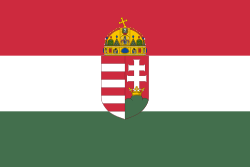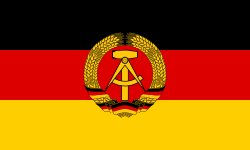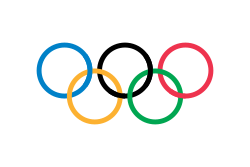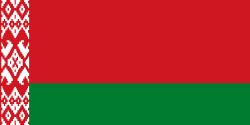Nobujuki Aihara
| Nobujuki Aihara | |
|---|---|
| Osobní informace | |
| Datum narození | 16. prosince 1934 |
| Místo narození | Takasaki, Japonsko |
| Datum úmrtí | 16. července 2013 (ve věku 78 let) |
| Místo úmrtí | Takasaki, Japonsko |
| Občanství | |
| Choť | Toshiko Shirasu-Aihara |
| Děti | Makoto Aihara Yutaka Aihara |
| Výška | 154 cm |
| Hmotnost | 53 kg |
| Sportovní informace | |
| Sport | sportovní gymnastika |
| Účast na LOH | 1956, 1960 |
| Některá data mohou pocházet z datové položky. Chybí svobodný obrázek. | |
| Přehled medailí | ||
|---|---|---|
| zlato | Řím 1960 | prostná |
| zlato | Řím 1960 | víceboj – družstva |
| stříbro | Melbourne 1956 | prostná |
| stříbro | Melbourne 1956 | víceboj – družstva |
| Mistrovství světa ve sportovní gymnastice | ||
| zlato | 1962 Praha | prostná |
Nobujuki Aihara (16. prosince 1934, Takasaki, Gunma, Japonsko – 16. července 2013, Takasaki) byl japonský sportovní gymnasta. Je dvojnásobným olympijským vítězem z Letních olympijských her 1960 v Římě.
Externí odkazy
 Obrázky, zvuky či videa k tématu Nobujuki Aihara na Wikimedia Commons
Obrázky, zvuky či videa k tématu Nobujuki Aihara na Wikimedia Commons - Nobujuki Aihara v databázi Olympedia (anglicky)
Média použitá na této stránce
Olympic Rings without "rims" (gaps between the rings), As used, eg. in the logos of the 2008 and 2016 Olympics. The colour scheme applied here was specified in 2023 guidelines.
Olympic Rings without "rims" (gaps between the rings), As used, eg. in the logos of the 2008 and 2016 Olympics. The colour scheme applied here was specified in 2023 guidelines.
Flag of Hungary, from 6 November 1915 to 29 November 1918 and from August 1919 until mid/late 1946.
(c) I, Cmapm, CC BY-SA 3.0
The flag of the Soviet Union (1955-1991) using a darker shade of red.
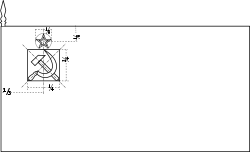
(c) I, Cmapm, CC BY-SA 3.0
The flag of the Soviet Union (1955-1991) using a darker shade of red.

Variant version of a flag of Japan, used between January 27, 1870 and August 13, 1999 (aspect ratio 7:10).
Autor: F l a n k e r, Licence: CC BY-SA 2.5
Flag of the Kingdom of Sardinia (1851-1861) and of the Kingdom of Italy (1861-1946). Use: Civil flag and ensign. In a governmental or a military context, the crowned version (see Crowned version) was always used (as State flag and naval ensign).
National flag and merchant ensign of Germany from 1933 to 1935.
National flag and merchant ensign of Germany from 1933 to 1935.
Finská vlajka
this is the flag of the Soviet Union in 1936. It was later replaced by File:Flag of the Soviet Union (1955-1980).svg.
Olympijská vlajka
Flag of the Socialist Federal Republic of Yugoslavia (1946-1992).
The design (blazon) is defined in Article 4 of the Constitution for the Republic of Yugoslavia (1946). [1]
Vlajka České republiky. Podoba státní vlajky České republiky je definována zákonem České národní rady č. 3/1993 Sb., o státních symbolech České republiky, přijatým 17. prosince 1992 a který nabyl účinnosti 1. ledna 1993, kdy rozdělením České a Slovenské Federativní republiky vznikla samostatná Česká republika. Vlajka je popsána v § 4 takto: „Státní vlajka České republiky se skládá z horního pruhu bílého a dolního pruhu červeného, mezi něž je vsunut žerďový modrý klín do poloviny délky vlajky. Poměr šířky k její délce je 2 : 3.“
US Flag with 45 stars. In use 4 July 1896–3 July 1908. Created by jacobolus using Adobe Illustrator, and released into the public domain. This flag was used during the Spanish-American War.
Autor: F l a n k e r, Licence: CC BY-SA 2.5
Flag of the Kingdom of Sardinia (1851-1861) and of the Kingdom of Italy (1861-1946). Use: Civil flag and ensign. In a governmental or a military context, the crowned version (see Crowned version) was always used (as State flag and naval ensign).
Flag of Hungary from mid/late 1946 to 20 August 1949 and from 12 November 1956 to 23 May 1957.


